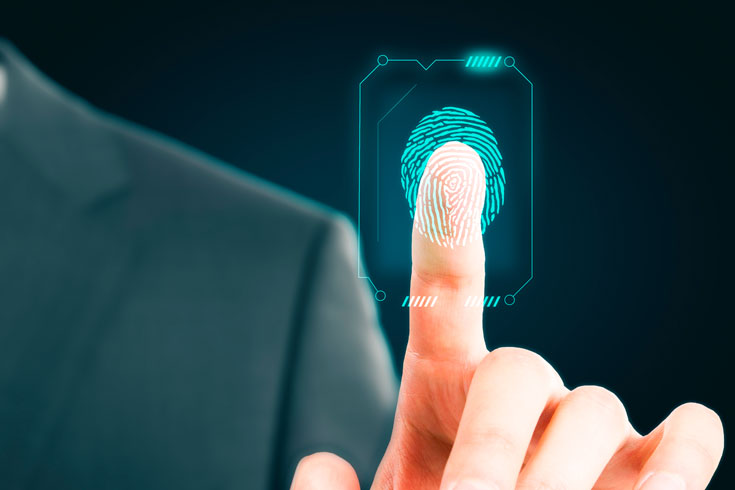
In a world where technology is advancing by leaps and bounds, biometric enrollment is emerging as an innovative and vital solution to optimize identification processes. In the Dominican Republic, this advance not only promises to transform the way people identify themselves, but also has the potential to significantly improve security and efficiency in multiple sectors. Throughout this article, we will explore how innovations in biometric enrollment are set to revolutionize identification, providing concrete examples and important considerations for businesses, governments and IT professionals.
What is Biometric Enrolment?
Biometric enrollment is the process of capturing and storing unique biological characteristics of an individual, such as fingerprints, facial recognition, iris scans and more, for later use in identification. This technology is becoming a global standard due to its accuracy and reliability.
Biometric features are difficult to forge, making biometric enrollment an ideal choice for applications that require high levels of security. In the Dominican Republic, this type of identification has the potential to increase trust in digital interactions and commercial transactions.
The enrollment process usually begins with the capture of biometric information, followed by its secure storage in specialized databases. This approach allows institutions to verify identities more efficiently and securely.
Importance of Biometric Identification in Security
Security is a primary concern for any identification system, and this is where biometric solutions shine. By using unique and unalterable features, such as fingerprints or facial recognition, the risks of fraud and identity theft are minimized.
In the context of the Dominican Republic, the implementation of these systems could considerably reduce cases of fraud in banking and government institutions. In addition, biometrics offers the possibility of creating a more secure environment in public places, improving citizens’ trust in institutions.
Access to critical services, such as banking and healthcare, can be facilitated by fast and secure identity verification enabled by biometrics. This not only contributes to security, but also to the accessibility of essential services.
Biometric Innovations Transforming Enrollment
As technology advances, new innovations emerge that strengthen and diversify the range of biometrics options. From facial recognition systems to iris scanning technologies, each innovation offers unique advantages.
Iris scanning systems, for example, provide an impressive level of accuracy, as the pattern in each person’s iris is unique. This technology is particularly useful for high-security applications where an additional level of verification is required.
Another notable innovation is voice recognition, which allows people to authenticate themselves through voice commands. This method is especially useful in situations where hands are busy, offering a convenient and secure alternative.
Implementation of Biometrics in the Dominican Republic
The implementation of biometric systems in the Dominican Republic is already underway, with several institutions adopting these technologies to improve security and operational efficiency. One notable example is the use of fingerprints for access control in government organizations.
In addition, pilot tests are being carried out in transportation systems to evaluate the effectiveness of biometrics in passenger verification. These initiatives not only seek to improve security, but also to optimize the flow of people at stations and terminals.
The private sector is also beginning to recognize the value of biometric solutions. Companies in a variety of industries are investing in these technologies to protect both their assets and their customers’ information.
Challenges and Ethical Considerations in Biometrics
While the advantages of biometrics are obvious, there are also ethical and practical challenges that must be addressed. Data privacy is a significant concern, as biometric information is highly sensitive.
The implementation of biometric systems must be accompanied by robust policies to ensure that data is handled securely and ethically. This includes transparency in the collection, storage and use of biometric information.
It is also essential to ensure that these technologies are accessible to the entire population, avoiding digital exclusion. Transparency and education of the general public are essential to mitigate concerns and foster acceptance.
International Success Stories that Inspire
Several countries have successfully implemented large-scale biometric systems, providing valuable case studies for the Dominican Republic. In India, the Aadhaar system has enrolled more than one billion citizens, enabling them to access government services more efficiently.
Singapore is another example of success, using biometrics to streamline immigration processes, significantly reducing waiting times at its borders. These examples highlight how biometrics can transform service delivery at the national level.
By observing these international cases, the Dominican Republic can adapt and improve its own implementation strategy, ensuring a successful deployment that benefits all citizens.
Economic Benefits of Biometrics for Enterprises
Beyond security, biometric solutions offer significant economic benefits for companies. By reducing fraud and improving operational efficiency, organizations can save considerable costs.
Automating processes through biometrics also frees up valuable time for employees, allowing them to focus on more strategic tasks that bring greater value to the business. This can translate into increased productivity and profitability.
In addition, companies that adopt biometric technologies often see an increase in satisfaction and loyalty from customers, who value the security and convenience these solutions offer.
Future Prospects for Biometrics in the Dominican Republic
Looking ahead, the potential for biometrics in the Dominican Republic is vast. As the technology continues to evolve, new opportunities will arise to expand its application in the public and private spheres.
Collaboration between government, business and technology organizations will be crucial to maximize the positive impact of these innovations. Working together, it is possible to build an ecosystem where security, efficiency and inclusion are the norm.
In addition, the continued development of biometric solutions tailored to local needs will help ensure that all segments of the population can benefit from these technologies in an equitable manner.
How to Prepare for the Biometric Revolution
For companies and IT professionals in the Dominican Republic, now is the time to prepare for the biometric revolution. This means staying informed about the latest trends and technological developments, as well as actively participating in education and training.
Investing in biometrics solutions not only improves security, but also positions organizations at the forefront of innovation. By adopting these technologies, companies can differentiate themselves in the marketplace and offer significant added value to their customers.
The future is bright for those who are willing to embrace change, and biometrics is a powerful tool to lead this transformation.
Conclusions and Next Steps
In conclusion, biometric enrollment represents an exciting opportunity to improve identification in the Dominican Republic. Innovations in this area not only have the potential to increase security, but also to optimize processes and generate significant economic benefits.
To take full advantage of these opportunities, it is crucial that organizations remain informed and proactive in the adoption of biometric technologies. In doing so, they will be better positioned to meet the security and efficiency challenges of the future.
Ready to embark on this exciting technological adventure? Explore our biometrics solutions and find out how we can help you integrate these innovations into your organization. Visit


